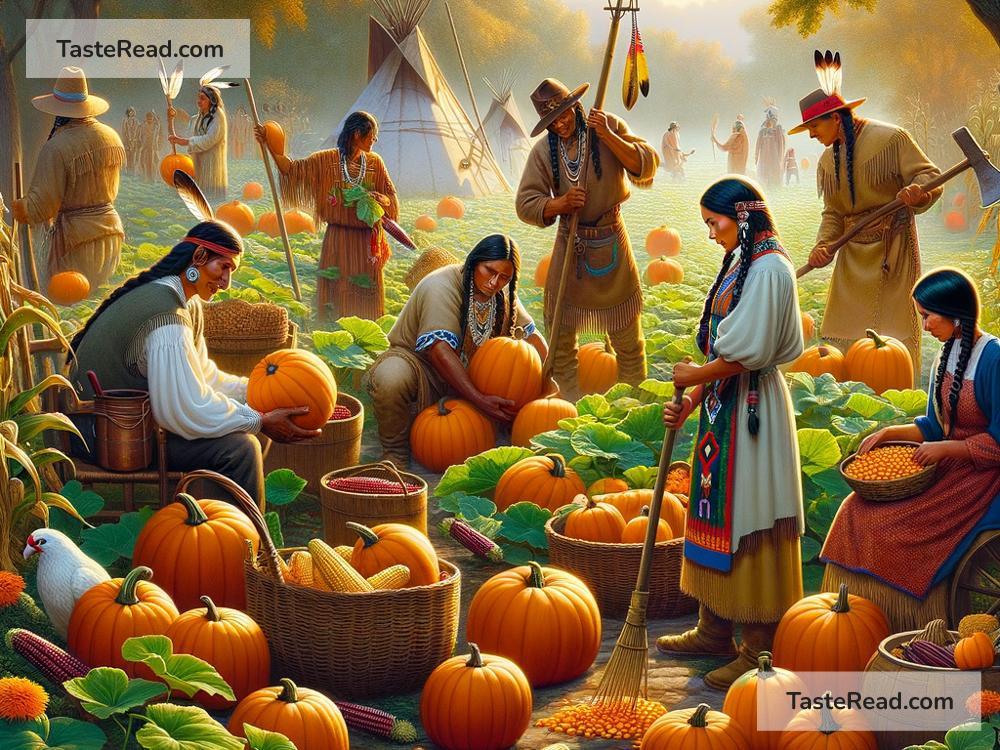The Fascinating Role of Pumpkins in Native American Agriculture
Pumpkins are a traditional fall favorite today, often found decorating porches, carved into jack-o’-lanterns, or baked into pies. But did you know that pumpkins played an important role in Native American agriculture long before they became a Halloween icon? For Native American communities, pumpkins were more than just food; they were a symbol of sustainability, ingenuity, and survival.
Let’s explore how pumpkins originated, how Native Americans grew and used them, and why they still deserve our appreciation today.
The Origins of Pumpkins
Pumpkins are one of the oldest cultivated crops in the Americas. Scientists believe they were first domesticated about 7,500 years ago in Central America. Wild pumpkins, known as gourds, were small and bitter, but Native Americans worked over generations to turn them into the larger, sweeter pumpkins we recognize today.
Native Americans classified pumpkins as part of the “Three Sisters,” a farming tradition that included corn, beans, and squash. These three crops grew well together and helped communities thrive. Pumpkins, as a type of squash, had a special role in this trio.
Pumpkins and the “Three Sisters”
The “Three Sisters” system was genius because it made the most of nature’s resources without harming the soil. Corn provided tall stalks for beans to climb, beans added nutrients to the soil, and pumpkins shaded the ground with their wide leaves, keeping weeds away and locking in moisture. This method was one of the world’s first examples of sustainable farming.
Pumpkins were easy to grow and highly versatile. Their thick skin made them resistant to pests and diseases, while their vines spread out and controlled erosion. They thrived both in sunny fields and along riverbanks, making them a dependable crop even in less-than-ideal conditions.
Because of their hard shells, pumpkins could last for months after harvesting. This made them a perfect food source for Native American tribes during winter when fresh crops were scarce. They could even be dried for long journeys.
How Native Americans Used Pumpkins
Native Americans didn’t waste any part of the pumpkin. Every part of the plant—seeds, flesh, leaves, and even flowers—served a purpose.
-
Food: Pumpkin flesh could be boiled, roasted, or baked. Some tribes dried pumpkin slices and stored them for the winter. Seeds were roasted for eating or added to soups and stews for extra protein. Even the blossoms were an edible treat!
-
Tools and Utensils: Dried pumpkin shells became bowls or containers for carrying water and food. Gourds (a close relative of the pumpkin) were often hollowed out and used as musical instruments, like rattles.
-
Medicine: Pumpkin seeds were sometimes crushed and used to treat illnesses like stomach aches or kidney problems. They were even believed to have healing powers.
-
Decoration and Ceremony: Pumpkins and gourds were often used in art and cultural ceremonies. Their bright orange color symbolized harvest and abundance.
Pumpkins: A Symbol of Survival
Pumpkins didn’t just provide practical benefits—they were a key to survival. Native Americans relied on pumpkins during tough times. When game was scarce or crops failed, pumpkins offered much-needed nutrition.
Pumpkins are packed with vitamins, especially Vitamin A, which supports eyesight and immunity. They’re also rich in fiber and low in fat, making them a healthy food source. This combination helped Native Americans stay strong and fight off disease.
Pumpkins also contributed to the sense of community. Harvesting pumpkins was a group activity, often involving entire families or villages. Sharing food reinforced bonds and reminded people of the importance of working together.
The Legacy of Pumpkins Today
Native Americans shared their knowledge of pumpkins with European settlers, who adopted them into their diets. Without Native American farming techniques, many settlers would have struggled to survive in unfamiliar environments.
Today, pumpkins remain a symbol of autumn and harvest season. They’re a big part of American culture, used in everything from seasonal recipes to holiday decorations. But behind every pumpkin pie and Halloween carving is a legacy of Native American agricultural brilliance.
We can learn a lot from how Native Americans used pumpkins. Their methods remind us that farming should work hand-in-hand with nature. Instead of relying on chemicals or machines, Native Americans used the natural strengths of plants to create balance and abundance.
Honoring the Pumpkin’s History
The next time you see a pumpkin, take a moment to appreciate where it came from. This humble vegetable has been helping people survive for thousands of years. Its history is deeply tied to the wisdom and resourcefulness of Native American communities.
As we celebrate autumn each year, let’s also celebrate the legacy of the pumpkin and the Native Americans who made it such an important part of their lives—and, eventually, ours. Their innovative farming methods and sustainable practices are lessons we can still apply today.
So, whether you’re carving a pumpkin for Halloween or baking a pie for Thanksgiving, remember to honor its fascinating history. This simple squash is truly one of the treasures of the earth.


